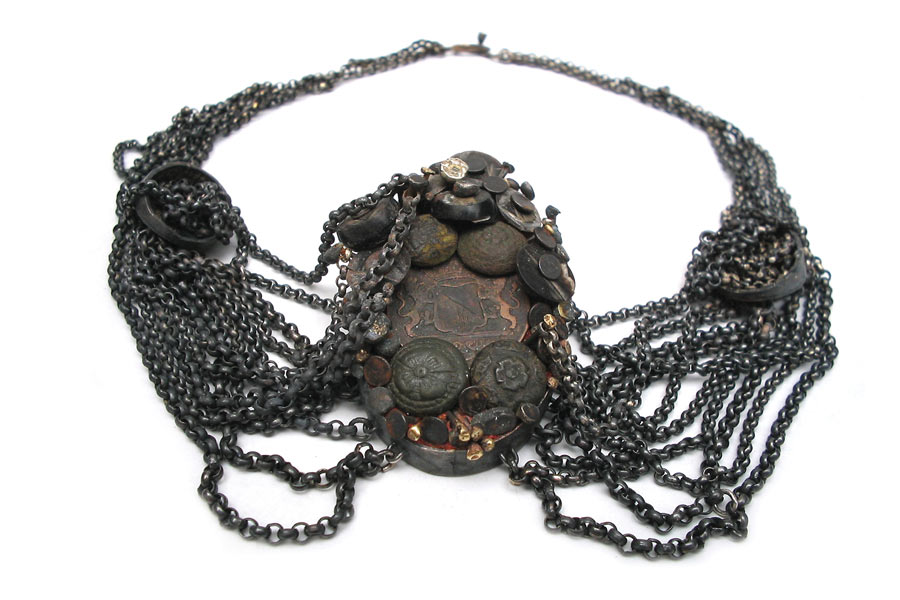
Ground
necklace | Gold, silver, 17th century buttons and coin, iron, wood, paint,
horn | Private collection, NL
Jerephaes
According
to the saga, the Flying Dutchman sails the oceans in order to find security.
In her jewelry, Francis Willemstijn travels through the ages with the
same purpose. Her beacons are the eleven generations, known by their full
names, which connect her to Cornelis Willemsteyn. Born in 1580, and married
to Peterke Jerephaes, Cornelis Wilmsteyn witnessed the dawn of the Dutch
nation state: commerce is burgeoning and the shipping trade is bringing
wealth into the nation. The Flying Dutchman merely encountered heavy weather
and death on its endless journey. Willemstijn's travels into the past
do not appear to have offered much comfort either, at least not if we
go by the titles she has given these pieces, including The Battle, The
Widow, and Grief. Taken together, these works sketch an associative portrait
of the seventeenth century, sometimes through the literal representation
of sailing ships, sometimes by the incorporation of authentic fragments,
such as buttons and coins. Several pieces constitute suggestive collages,
characterized by a much freer use of images and materials. Even without
guiding titles, they evoke a lost world. The past thus evoked is not a
desolate realm: people have found their place in it, represented by the
Wilmsteyn family arms. We find only the contours of these insignia, so
that they may come to symbolize the countless nameless people who have
been swallowed by time. The brooch Jerephaes shows the succession of parents
and children as an endless procession marked by a ruthless regularity.
In the eponymous necklace, time appears to have mercilessly thrown people
together. The ideas underlying these works are reinforced by their design;
many parts have been meticulously sawn out of thick silver plate. The
edges have not been polished smooth; by showing themselves in their roughness,
the pieces acquire a monumental quality. Materials such as ebony and rosewood,
joined together with nails and chains, add to their significance. The
Battle achieves a beautiful synthesis by combining three silhouettes of
sailing ships, bound together with white cotton thread. This thread does
not merely make the piece quite literally hang together, but also offers,
because of its scale, the association with a ship's cables. Its criss-crossing
pattern further suggests storms and war at sea.
The Flying Dutchman will never reach its destination; by undertaking this
journey, Francis Willemstijn has immediately found her home. Whatever
new discoveries its next stages will bring, it will be a journey to sign
up for in full confidence.
Ward Schrijver, 2004
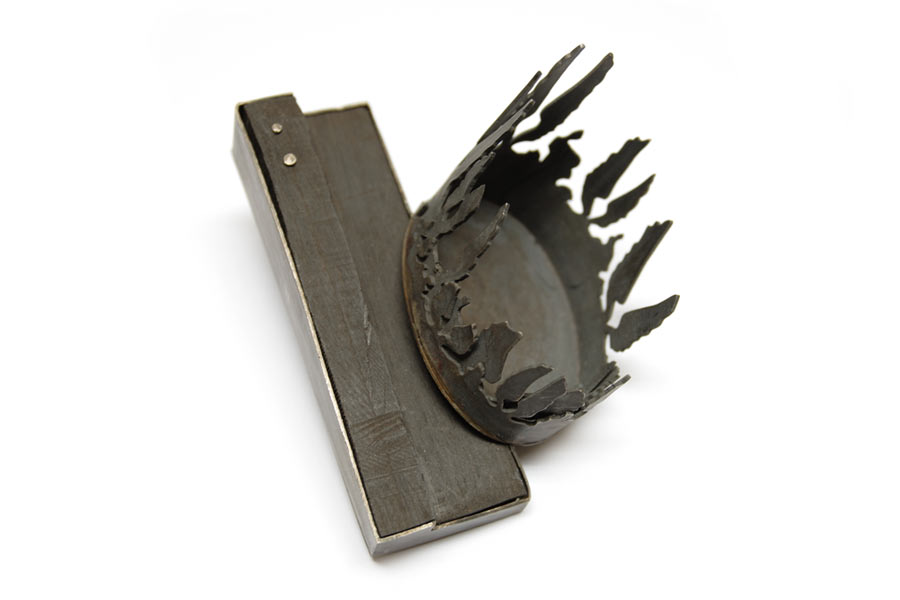
Jeresteijn
brooch | Silver, ebony
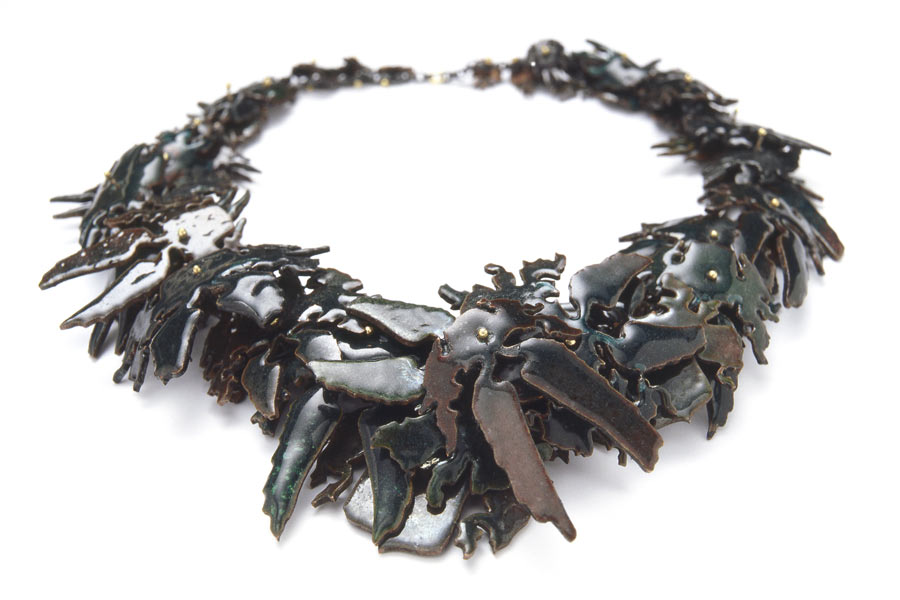
Jerephaes necklace | Copper, silver, gold, enamel |
Private collection, NL
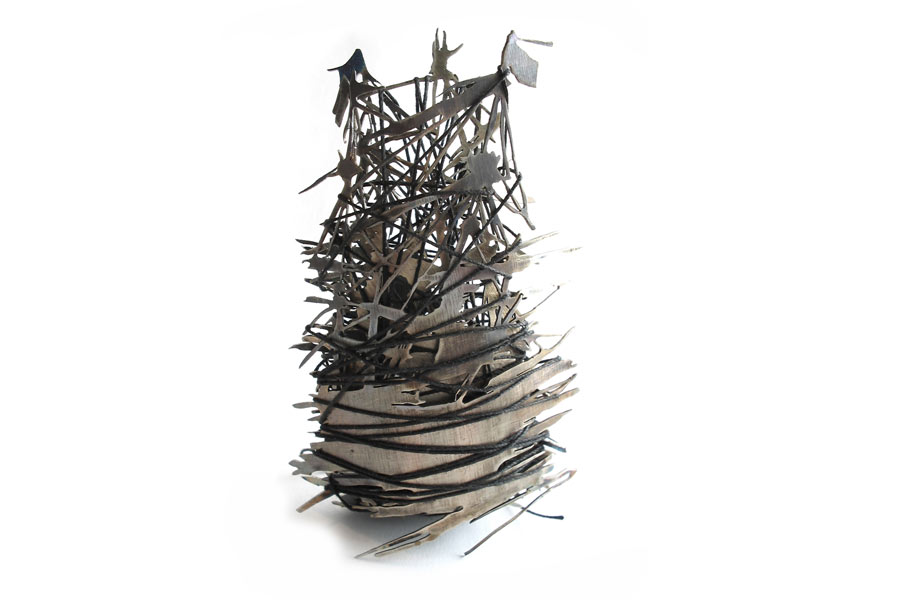
The Battle brooch | Silver, cotton |
Edition of 7, Private collections, NL & USA
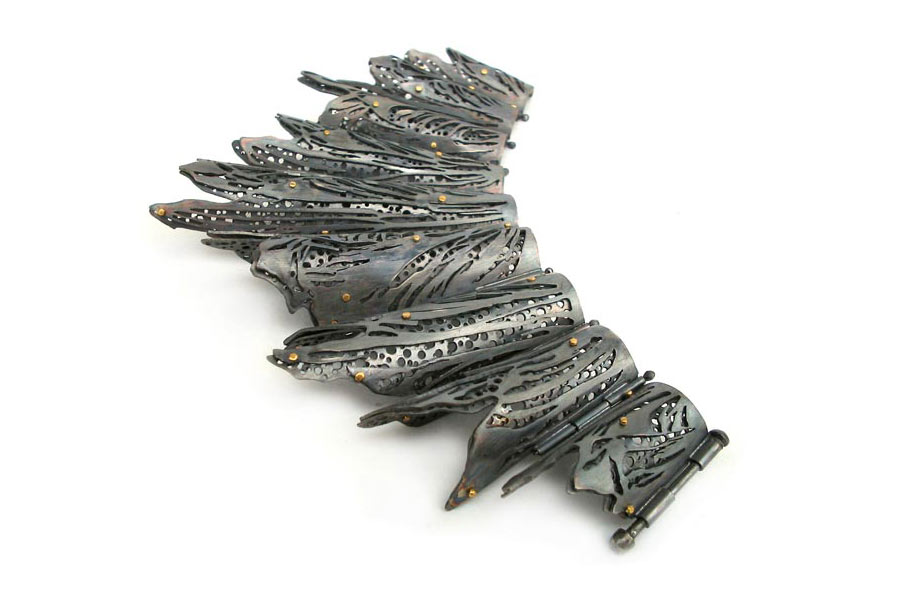
Tulips
bracelet | Silver, gold | Private collection,
USA
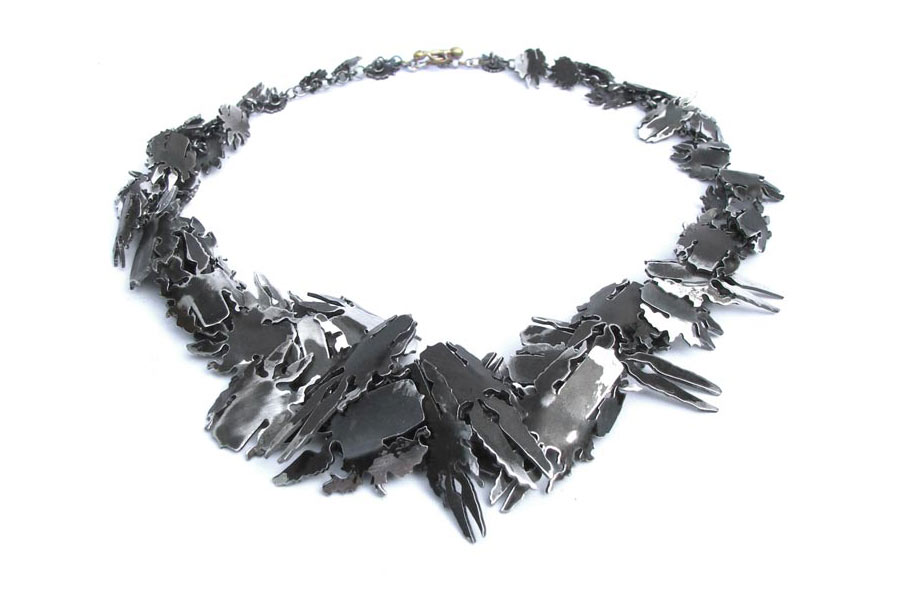
Peterke
necklace | Silver, paint | Private collection, NL
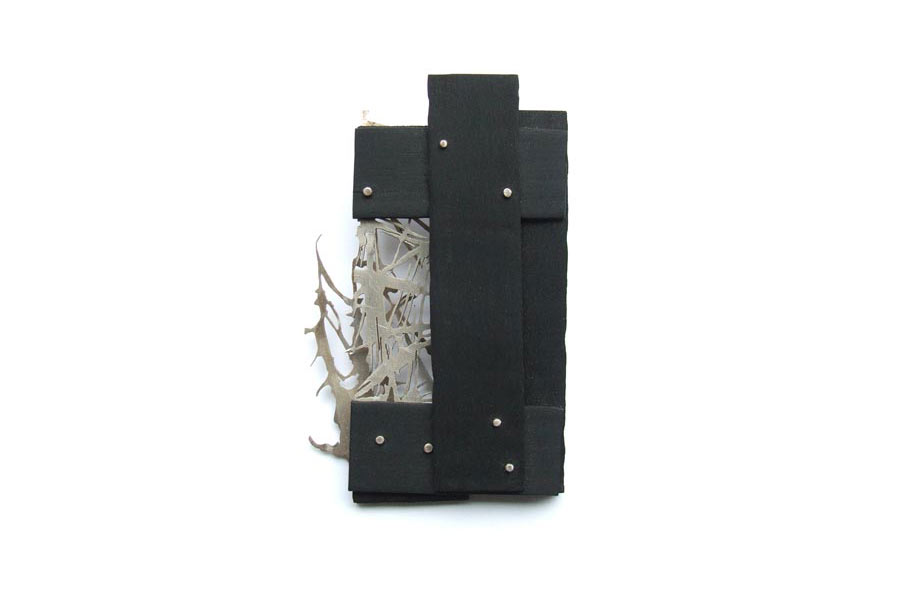
For K. brooch | Silver, ebony
| Private collection, NL
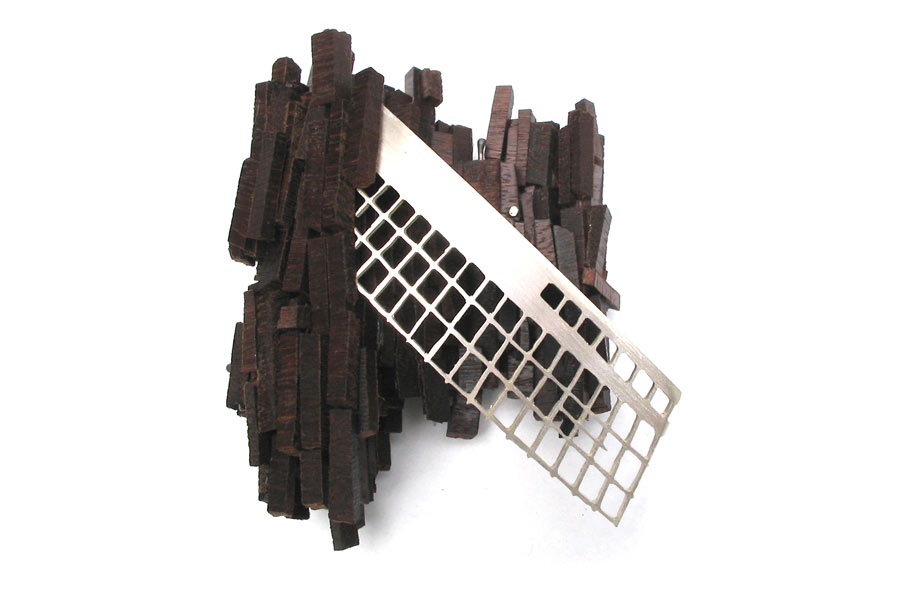
Grief brooch | Silver, rosewood | Private
collection, NL
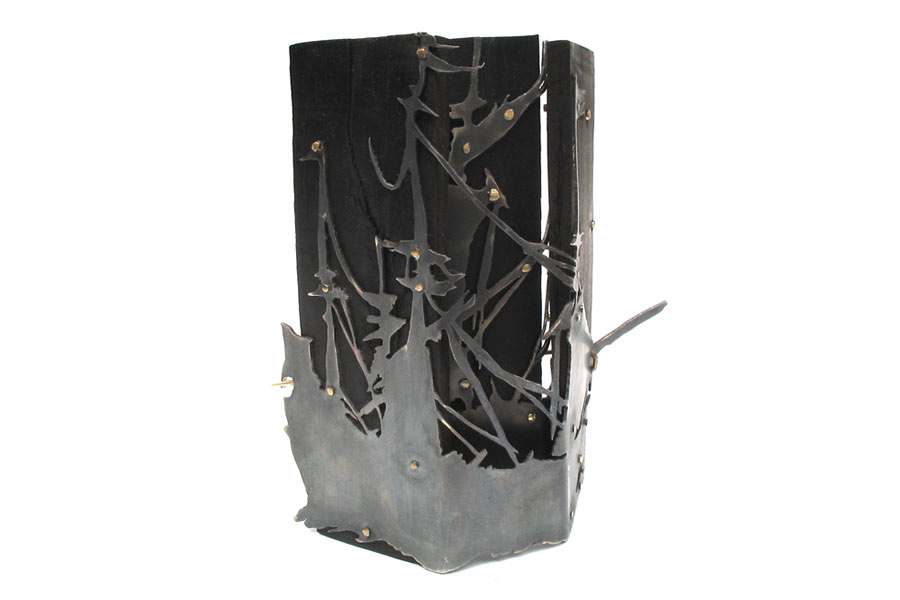
Noordzee brooch | Gold, silver, ebony
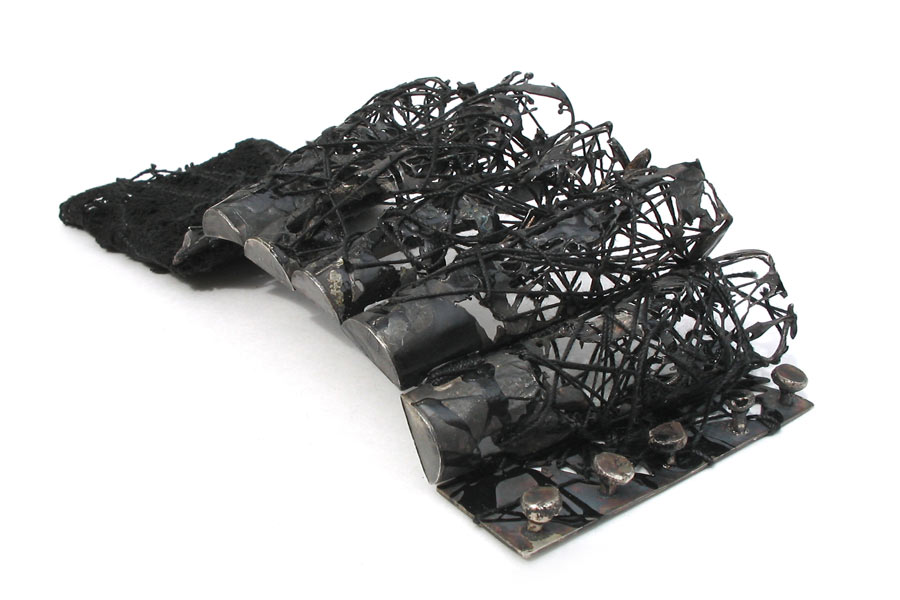
The Widow bracelet | Silver, cotton, paint
| Private collection, NL
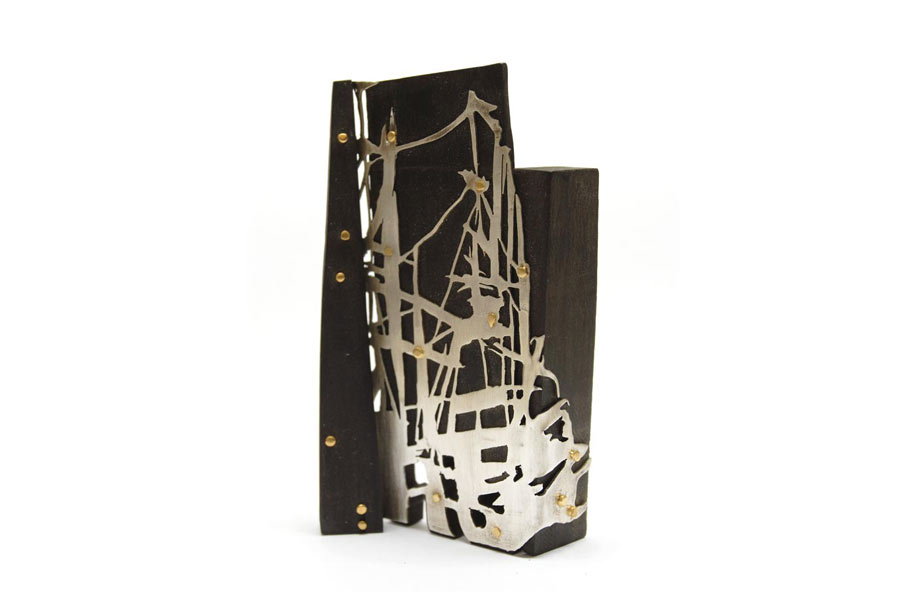
Hoek brooch | Gold, silver, ebony
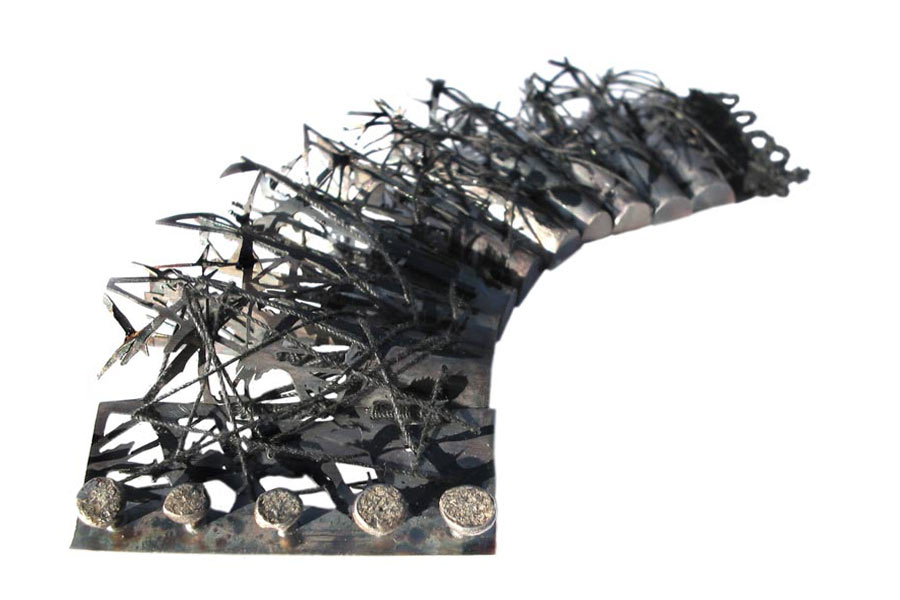
The Widow of the Flying Dutchman bracelet
| Silver, cotton | Private collection, DE
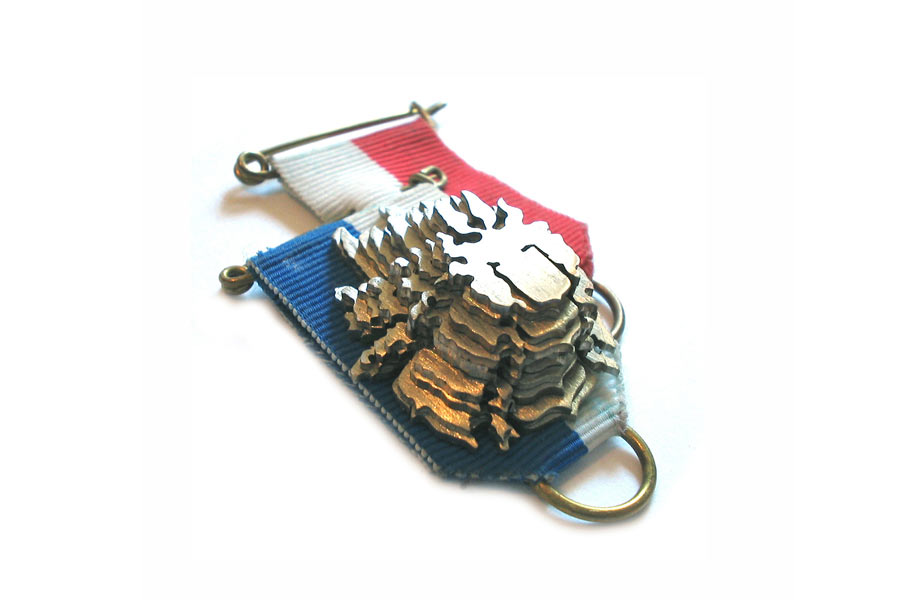
Jerephaes brooch | Silver, brass, textile
| Private collection, NL
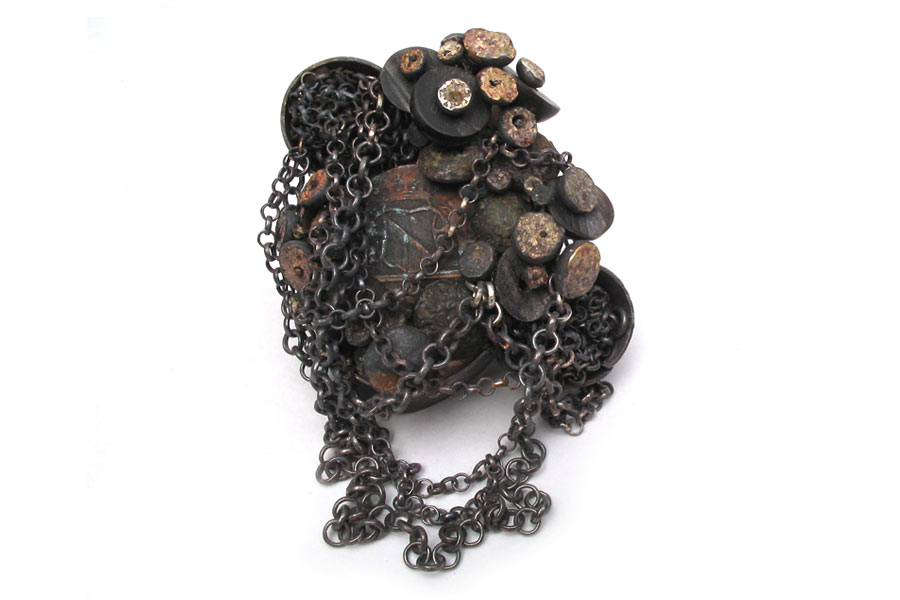
Ground
brooch | Gold,
silver, 17th century buttons and coin, iron, wood, paint, horn
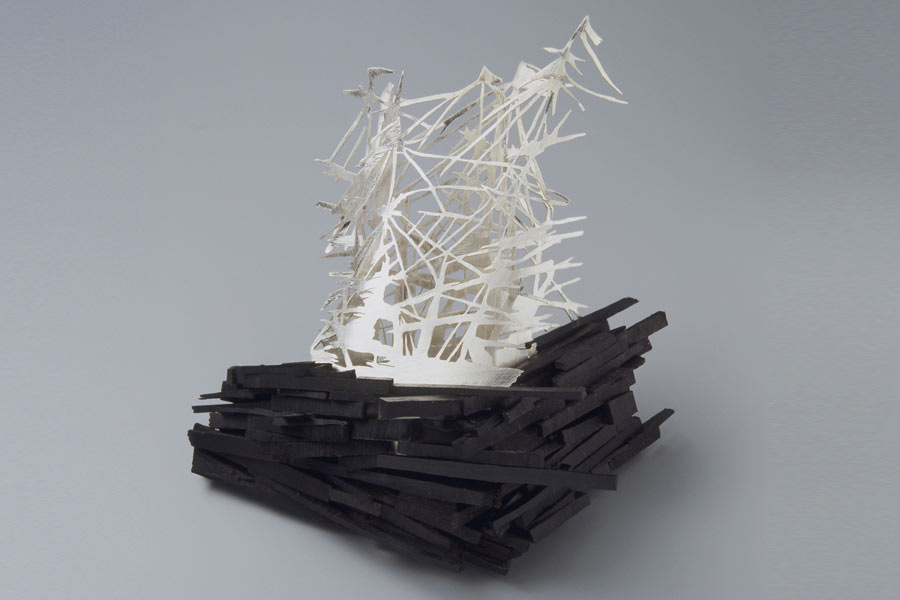
The Flying Dutchman brooch | Silver,
ebony | Private collections, NL
Jerephaes, 2004
Graduate
Collection Gerrit Rietveld Academie, Amsterdam, NL
Thank you to Iris Eichenberg, Pieter Elbers, Hilde de Decker and Ellert
Haitjema
Photography: Francis Willemstijn
Photography brooch The Flying Dutchman and necklace Jerephaes: Eddo Hartmann